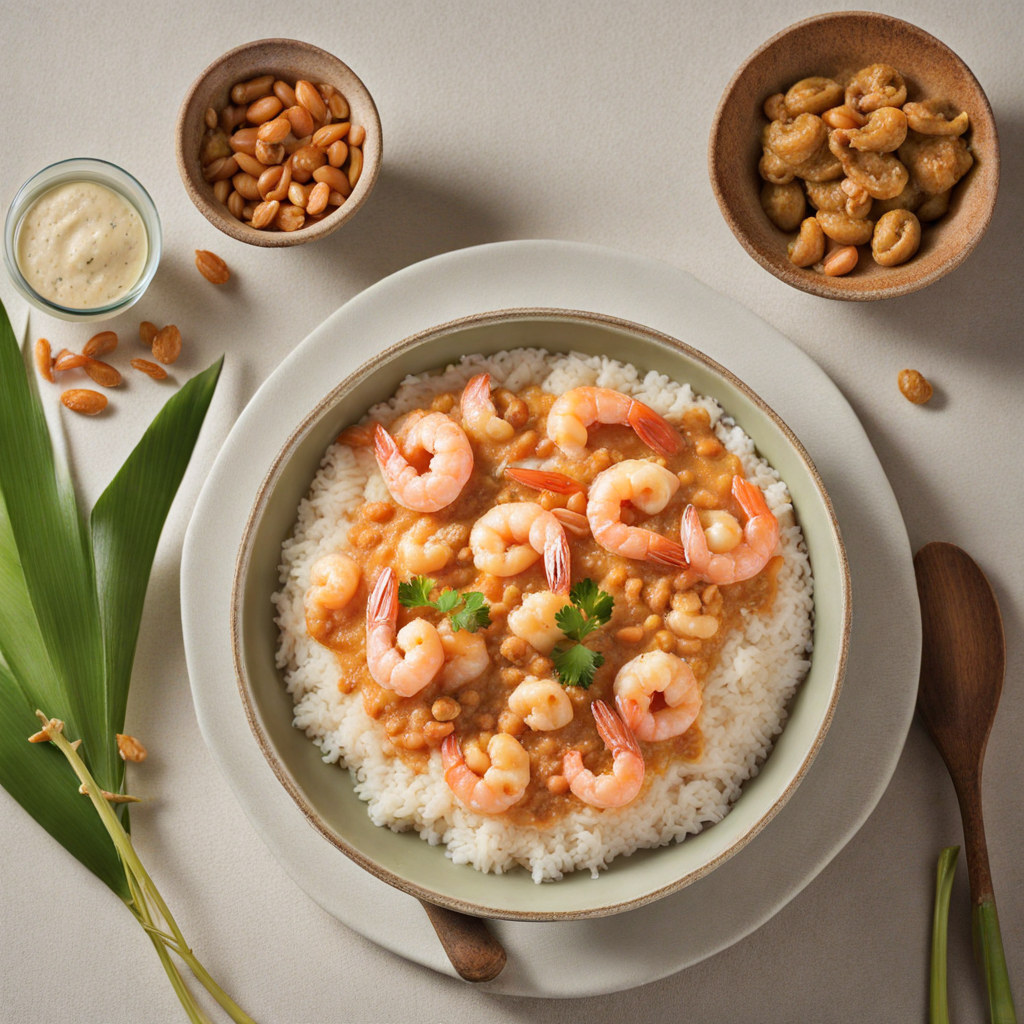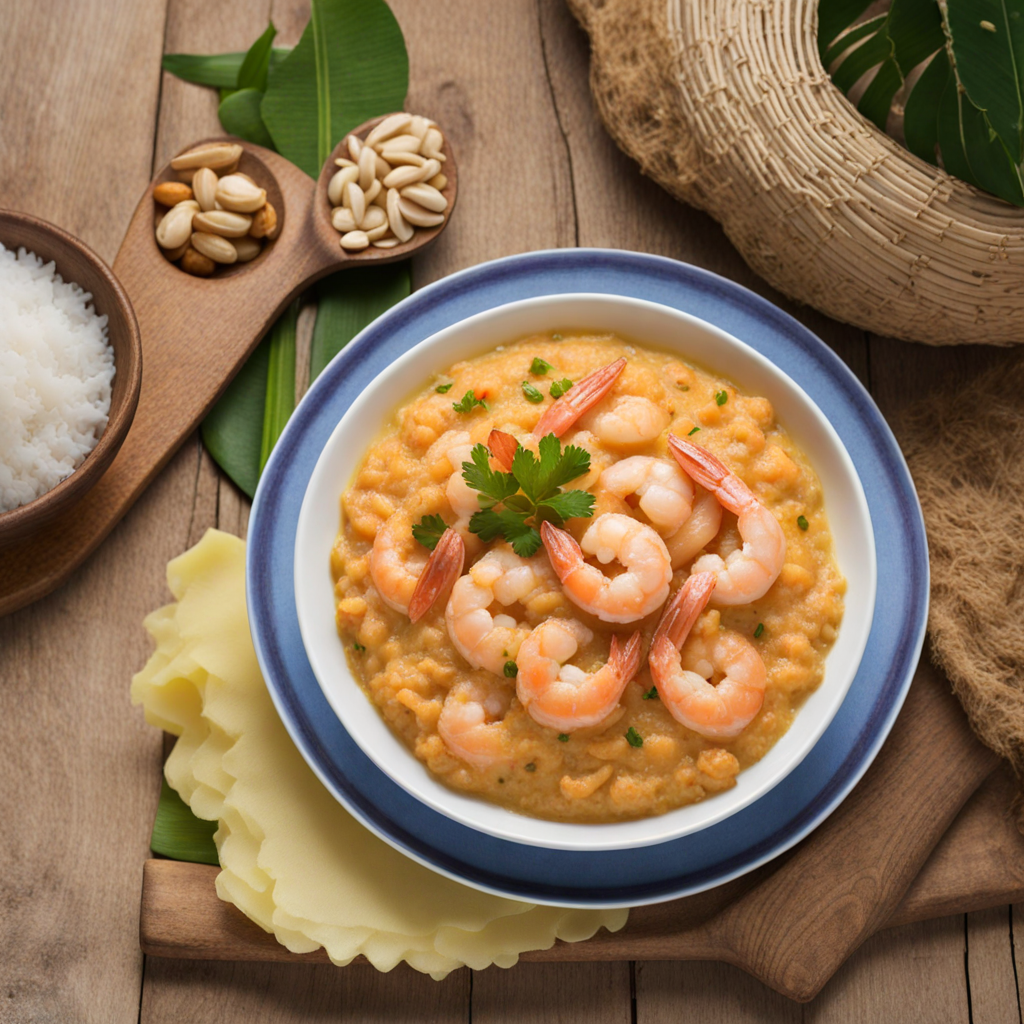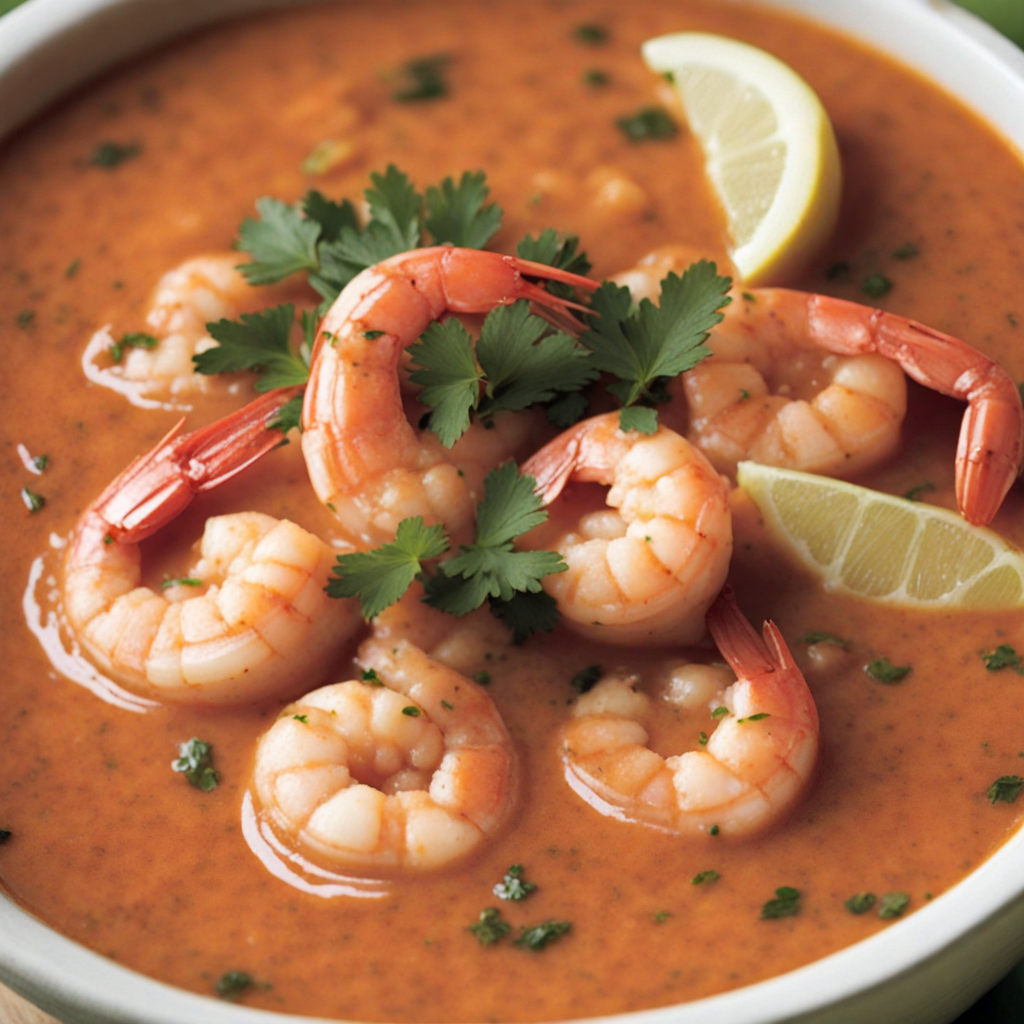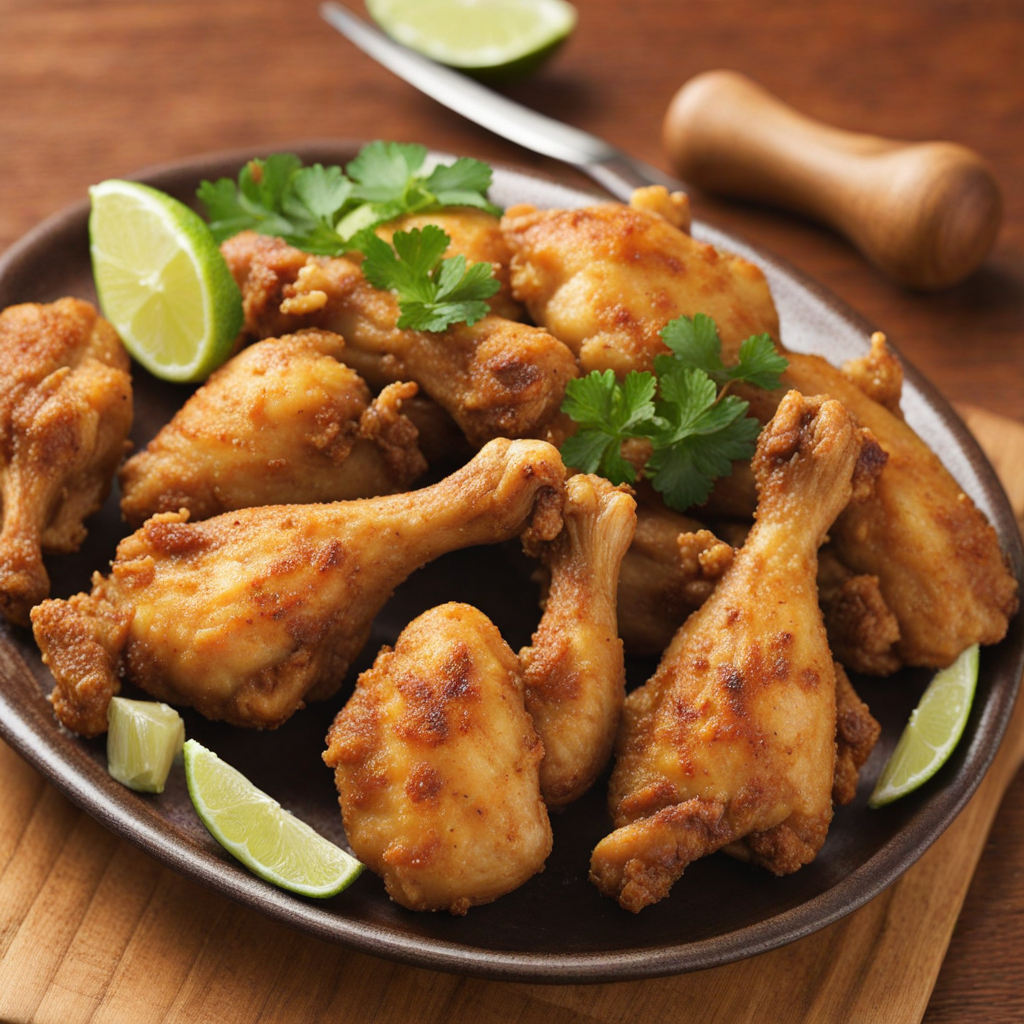Vatapá
Vatapá is a traditional Brazilian dish that hails from the northeastern region, particularly associated with Bahia. This creamy and flavorful preparation is a delightful blend of ingredients, primarily made from bread, shrimp, coconut milk, and a variety of spices. The bread is typically soaked in coconut milk to create a rich, velvety base that is then combined with ground peanuts, palm oil, and a mix of aromatics including ginger, garlic, and onion. The resulting dish is both comforting and exotic, showcasing the vibrant flavors of Brazil’s coastal cuisine. What sets Vatapá apart is its unique combination of textures and flavors. The creamy, smooth consistency contrasts beautifully with the tender shrimp, creating a dish that is both hearty and indulgent. The addition of ground peanuts adds a nutty depth, while the palm oil imparts a distinct, rich flavor that is characteristic of many Bahian dishes. Often served with rice, Vatapá can also be enjoyed with acarajé, a popular street food made from black-eyed peas, making it a versatile option for any meal. As you savor Vatapá, you will find that it embodies the essence of Brazilian cuisine—bold, colorful, and full of life. The dish is frequently garnished with fresh cilantro or green onions, which add a refreshing touch to its rich profile. Whether you're enjoying it at a local eatery or attempting to recreate it at home, Vatapá invites you to experience the warmth and vibrancy of Brazilian culture through its exquisite flavors and textures.
How It Became This Dish
The History of Vatapá: A Culinary Jewel of Brazil Vatapá, a beloved Brazilian dish, is a sumptuous blend of flavors and textures that embodies the rich cultural tapestry of the country. With its roots tracing back to the Afro-Brazilian communities in the northeastern state of Bahia, vatapá is not just a dish; it is a celebration of history, culture, and resilience. This article delves into the origins, cultural significance, and evolution of vatapá over time. #### Origins and Ingredients The origins of vatapá can be traced back to the colonial period of Brazil, specifically during the 16th and 17th centuries. The arrival of African slaves, who were brought to work on sugar plantations and in other sectors of the economy, introduced a wealth of culinary traditions that would shape Brazilian cuisine. Vatapá is believed to have evolved from traditional West African dishes, particularly the use of ground peanuts, spices, and fish. The word "vatapá" itself is thought to derive from the Yoruba language, where "ata" means "to grind" and "pa" means "to paste," reflecting the dish's preparation method. The basic components of vatapá include bread, coconut milk, peanuts or cashews, palm oil, and fish or shrimp, often seasoned with ginger, garlic, and various spices. The combination of these ingredients reflects both African and indigenous influences, with the coconut milk and palm oil being staples in Afro-Brazilian cooking. The use of bread, particularly stale bread, to thicken the dish is a resourceful adaptation that speaks to the ingenuity of the communities that made do with what was available. #### Cultural Significance Vatapá is more than a dish; it is a symbol of identity for many Afro-Brazilian communities, particularly in Bahia, where the dish is often served at celebrations, religious festivals, and family gatherings. In the context of Candomblé, an Afro-Brazilian religious tradition, vatapá is often offered to the orixás (deities) during rituals, highlighting its spiritual significance. The dish is also a staple at the famous Bahian feast known as "acarajé," where vatapá is used as a filling for the fried black-eyed pea balls. The cultural importance of vatapá transcends its flavor; it reflects the history of African displacement and the blending of cultures that characterize Brazilian society. As African slaves brought their culinary practices to Brazil, they adapted their traditional recipes using local ingredients, resulting in a unique cuisine that is celebrated today. Vatapá is emblematic of this fusion, showcasing the resilience and creativity of Afro-Brazilian communities in preserving their culinary heritage. #### Evolution Over Time As Brazilian society evolved, so too did vatapá. The dish, once primarily associated with Afro-Brazilian heritage, gradually permeated broader Brazilian culture. In the early 20th century, as Brazil experienced increased urbanization and the migration of people from rural areas to cities, vatapá began to appear in restaurants and homes beyond Bahia. It became a dish that was not only cherished by Afro-Brazilians but also embraced by people from other cultural backgrounds. In contemporary Brazil, vatapá has undergone various interpretations and adaptations. Chefs and home cooks alike have experimented with different proteins, including crab and lobster, while maintaining the dish's essential characteristics. The use of modern cooking techniques has also allowed for variations in texture and presentation, making vatapá a versatile dish that can be served in both casual and gourmet settings. One noteworthy development in the 21st century is the rise of food tourism in Bahia, where visitors flock to experience the region's culinary delights. Vatapá has become a must-try dish for tourists, further solidifying its status as a culinary icon. Street vendors and restaurants in Salvador, the capital of Bahia, showcase vatapá as part of their offerings, often served with rice and a side of salad or farofa (toasted cassava flour). This visibility has contributed to a renewed interest in traditional Bahian cuisine, fostering pride in local culinary heritage. #### Vatapá in Popular Culture The influence of vatapá extends beyond food into popular culture. It appears in literature, music, and visual arts as a symbol of Bahian identity and Afro-Brazilian culture. Artists and writers have often used vatapá as a motif to explore themes of heritage, community, and belonging. In contemporary Brazilian music, particularly in genres like samba and axé, references to vatapá evoke a sense of nostalgia and connection to cultural roots. Moreover, the dish has been featured in various gastronomic events and festivals, celebrating its historical significance and culinary artistry. These events not only highlight vatapá but also promote the preservation of traditional cooking methods and the cultural narratives associated with them. #### Conclusion Vatapá is a culinary treasure that tells a story of resilience, adaptation, and cultural fusion. Its origins in the Afro-Brazilian communities of Bahia reflect the broader narrative of Brazil's history, where diverse influences have shaped a unique and vibrant culinary landscape. As vatapá continues to evolve and gain recognition beyond its regional roots, it remains a symbol of pride for many Brazilians, serving as a reminder of the rich tapestry of flavors and traditions that define their cultural identity. In every spoonful of vatapá lies not only an explosion of flavors but also a profound connection to the past, making it a dish that resonates with both history and modernity. Whether enjoyed in a bustling street market in Salvador or in the comfort of a home, vatapá stands as a testament to the enduring legacy of Brazil's culinary heritage.
You may like
Discover local flavors from Brazil







